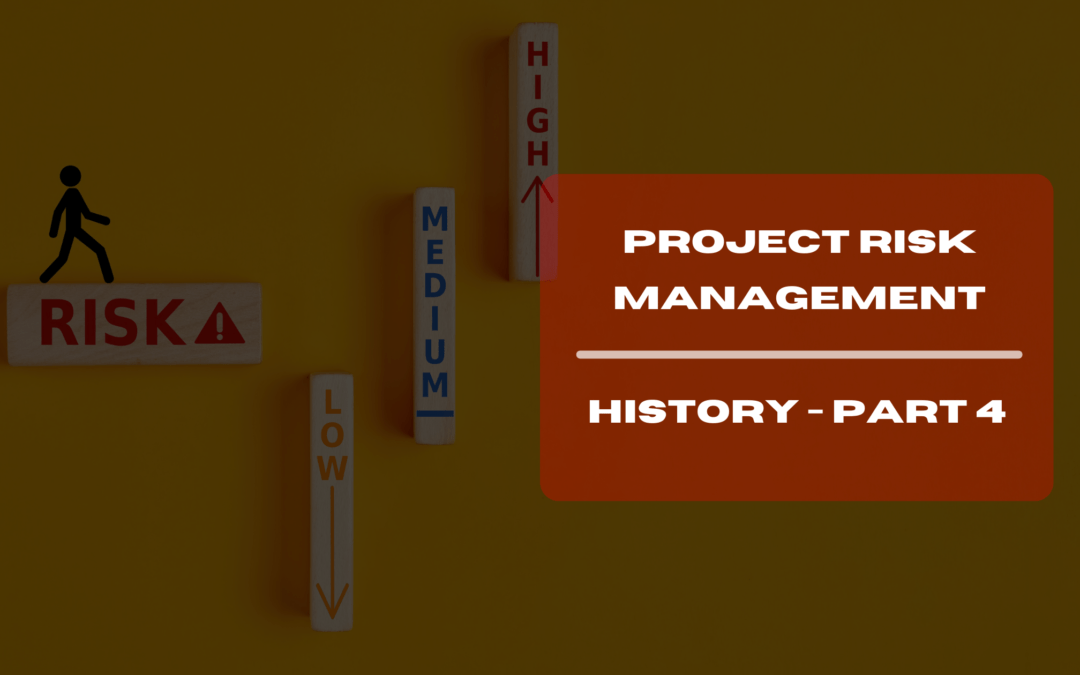The history of Project Risk Management: Part 4
As we bring our exploration of the historical context of project risk management to a close, it’s essential to reflect on the significance of understanding this rich history for both students and professionals in the construction project management field.
If you want to refer the previous Parts, you can read them here:
The Roots of Project Risk Management: Part 1
The Roots of Project Risk Management: Part 2
The Roots of Project Risk Management: Part 3
Table of Contents
The Relevance of History
History is often perceived as a subject of the past, but in the realm of project risk management, it is a living and breathing entity. The history of how we have grappled with risks in construction projects is a source of valuable lessons. By studying this history, students and professionals can:
- Gain Insights: Historical context provides insights into the challenges and solutions of the past. Understanding the problems our predecessors faced and how they overcame them can inform our approach to risk management today.
- Enhance Decision-Making: Informed decision-making is a cornerstone of effective project risk management. Historical knowledge enables professionals to anticipate risks, evaluate potential consequences, and make proactive decisions to mitigate them.
- Embrace Innovation: History shows that the construction industry has always evolved to meet new challenges. Today, with advancements in technology and methodologies, it is essential to embrace innovation and adapt to changing circumstances.
- Build a Risk Culture: A risk-aware culture is essential for effective risk management. By appreciating the historical context, organizations can foster a culture where risk identification and mitigation are embedded in every project.
- Avoid Repetition: Learning from history helps us avoid repeating the mistakes of the past. It enables us to recognize patterns and take preventive measures to minimize the recurrence of similar risks.
The Evolving Discipline
Project risk management in construction is a field in constant evolution. It draws from diverse disciplines, including engineering, economics, psychology, and statistics. By recognizing its historical roots and understanding how various models and methodologies have emerged over time, professionals can appreciate the interdisciplinary nature of the discipline.
Moreover, the adoption of international standards like ISO 31000 and the development of sophisticated tools such as Monte Carlo simulations demonstrate that project risk management has become a cornerstone of modern project management. It is not just about mitigating risks; it’s about optimizing project outcomes and ensuring the efficient allocation of resources.
A Call to Action
In the world of project management, risk is not a foe to be feared but an adversary to be understood and managed. As we conclude our exploration of the roots of project risk management, let it serve as a call to action.
For students, embrace the rich history of risk management in construction as you embark on your educational journey. Recognize that you are inheriting a legacy of knowledge and innovation that can empower you to meet the challenges of the future.
For professionals, continue to refine your skills and stay at the forefront of industry trends. Embrace methodologies and tools that have emerged from historical lessons and contribute to the ever-evolving field of project risk management.
In doing so, we ensure that the legacy of those ancient builders, Renaissance thinkers, and modern project managers lives on. Their collective wisdom has paved the way for us to navigate the complexities of construction projects with confidence and competence.
Thank you for accompanying us on this historical journey. May the lessons of the past inspire your future endeavors in the dynamic world of project risk management.
If you missed any part of our exploration, you can revisit the previous sections to delve into the fascinating history of project risk management in the construction industry.
From ancient civilizations to modern methodologies, the roots of risk management run deep, shaping the way we manage projects today.

